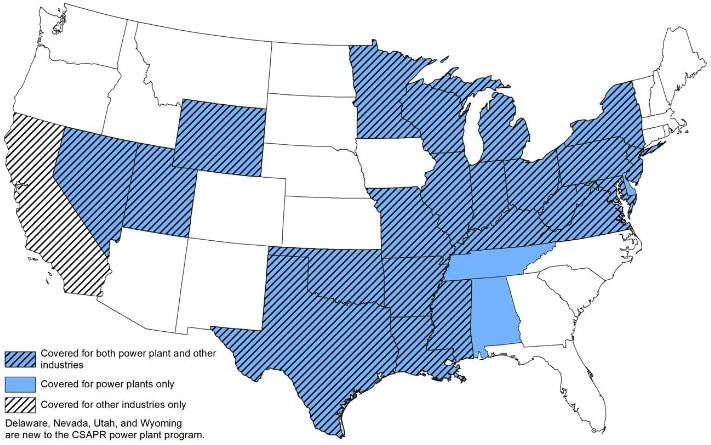EPA Proposes Plan to Limit Cross-State Smog Pollution

The U.S. Environmental Protection Agency on March 11 proposed federal implementation plans for 26 states to ensure that they meet the Clean Air Act’s “good neighbour provision,” by reducing air pollution that impairs the ability of downwind states to meet their 2015 ozone standards.
From 2023, the agency proposes to include electric generating units in 25 states in the Cross-State Air Pollution Rule, CSAPR, NOX Ozone Season Group 3 Trading Program, which would be strengthened for the 2015 ozone National Ambient Air Quality Standards. The proposal would double the number of states participating in the Group 3 trading program including five states not currently covered by any CSAPR trading program for seasonal nitrogen oxide emissions. The proposal also calls for new NOx emissions for industrial sources in 23 states starting in 2026.
The proposal targets the ozone and ozone-forming NOX emissions that are being transported by wind across state lines, often over long distances. Ozone is created by chemical reactions involving ozone precursors including nitrogen oxides and volatile organic compounds emitted by industrial facilities, electric utilities, vehicle exhaust, gasoline vapors, and chemical solvents in the presence of sunlight. Downwind areas that are impacted by pollution from upwind states, would benefit from the proposal.
EPA estimates that benefits of the proposed rule in 2026 could be as high as $18 billion and annual net benefits – after accounting for compliance costs – would be $15 billion (2016$, 3 percent discount rate) from 2023-2042.
The agency estimates that the proposal would reduce ozone-forming NOx emissions from the 26 significantly contributing upwind states by approximately 94,000 tons during the 2026 ozone season (May 1–Sep. 30) compared to a business-as-usual scenario. About half of those emissions reductions would come from fossil fuel-fired power plants – reducing their ozone season NOx emissions by 29 percent from pre-proposal levels. The additional 47,000 tons of NOX emissions reductions would come from the other industrial sources covered by the proposal, representing a 15 percent reduction from pre-proposal levels.
Environmental groups welcomed the proposal as a much-needed step to cut ozone-forming emissions. The Edison Electric Institute, which represents investor-owned utilities, said it is committed to working with EPA to take a “coordinated and holistic approach to policymaking.” The National Association of Manufacturers said it supports the intent of the proposal but warned it could have significant effects on American families if not thoughtfully implemented.
The agency also plans to update the new budgets annually to account for power plant retirements, new units, and changes in operations starting in 2025. The proposal also would set a daily emissions rate limit for large coal-fired units, taking effect in 2024 for units with existing controls and in 2027 for units installing new controls.
The proposal opens a 60-day public comment period after publication in the Federal Register.
EnerKnol Pulses like this one are powered by the EnerKnol Platform—the first comprehensive database for real-time energy policy tracking. Sign up for a free trial below for access to key regulatory data and deep industry insights across the energy spectrum.
ACCESS FREE TRIAL